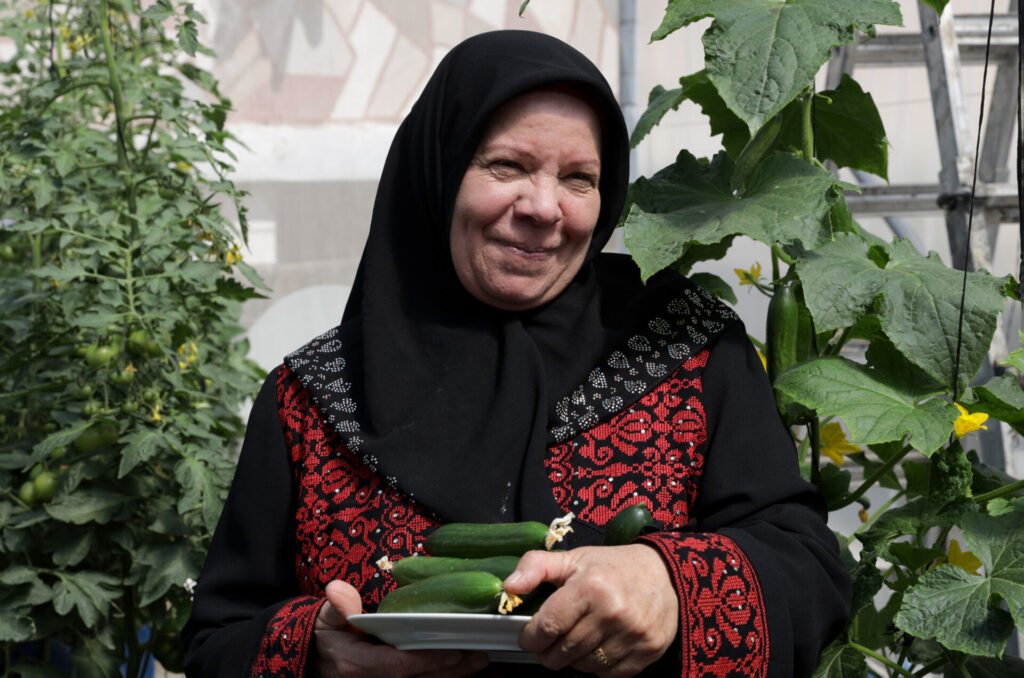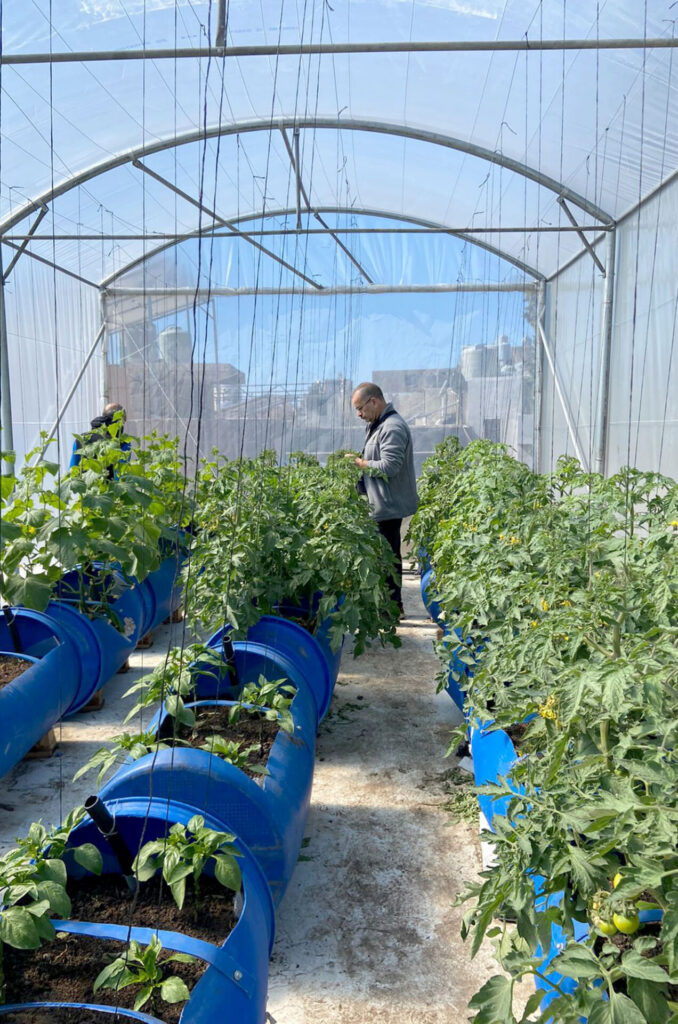Building Resilient Communities: The Nexus of Development and Relief
Posted in: Programs
In today’s world, the nexus of development and relief has become a critical area of focus. In recognizing that humanitarian response and long-term development efforts are interconnected, it becomes apparent that a coordinated approach is necessary to effectively address the needs of vulnerable populations. Our partner, the United Nations Office for the Coordination of Humanitarian Affairs (UNOCHA), has been at the forefront of promoting the nexus of development and relief, and recently started a dialogue on this topic in Lebanon.
At Anera, we are working towards building resilient communities and enhancing local capacities in low-income countries. One of our initiatives includes the use of rooftop gardens using modified hydroponic methods to promote food security. The gardens not only provide a source of fresh produce but also create economic opportunities for communities. This is an excellent example of the nexus of development and relief, as the gardens provide immediate relief and also promote long-term development.


However, implementing programs that address the nexus of development and relief is not without challenges. A shift in mindset is required, and there is a need for collaboration and partnership among different organizations. Additionally, there must be a willingness to take a long-term view and invest in building local capacity and resilience.
Many organizations have recognized the importance of intertwining development and relief and are working towards incorporating this understanding into their program work. UNOCHA has been promoting this approach through coordination and collaboration among different humanitarian actors. The World Food Programme is also using a nexus approach to address food insecurity in low-income countries. Through their cash-based transfer program, they provide cash assistance to vulnerable communities, which not only addresses immediate food needs but also strengthens local economies.


As we work towards building resilient communities, it is essential to remember that there is no one-size-fits-all approach. Communities have unique needs and require tailored solutions. The nexus of development and relief approach recognizes this, and by working collaboratively, we can ensure that our responses are effective, efficient, and sustainable.
In sum, the nexus of development and relief is a critical approach that promotes sustainable outcomes. By building resilient communities, addressing underlying vulnerabilities, and promoting sustainable development, we can create a better future for all. I invite readers to share their perspectives on this approach and how it can be implemented in different contexts. Let’s work together to build a more effective and sustainable humanitarian system.
The challenges facing Lebanese families are interwoven, and our programs in the region have transformed to meet complex, evolving needs. Your support will positively impact families across Lebanon who are struggling right now.
OUR BLOG
Related
In this log, Anera provides updates on unfolding war in Palestine and our response. In some cases, additional activities may be added retroactively to the daily entries as we receive additional program reporting. Questions? See our FAQ page July 10,…

